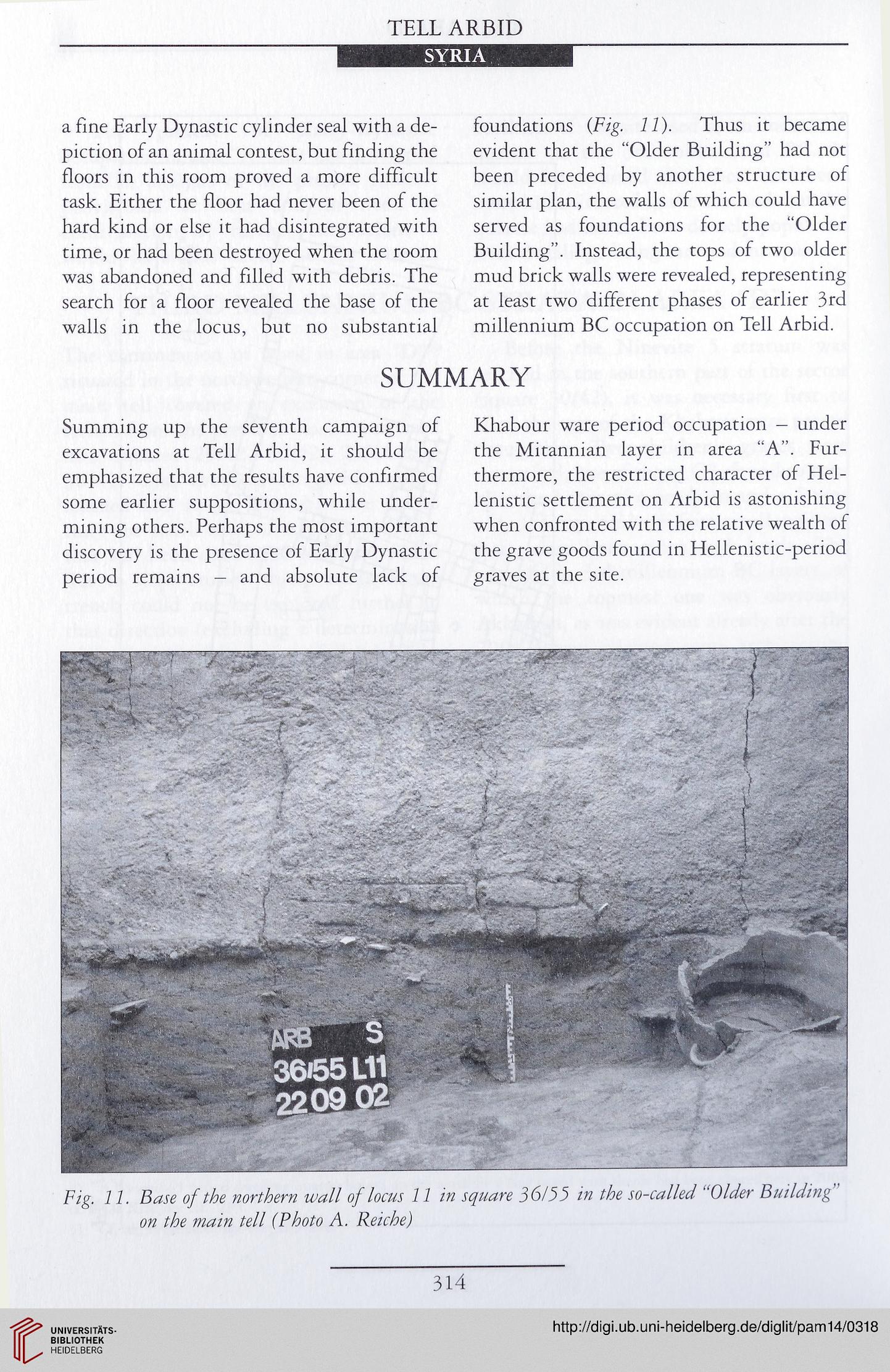TELL ARBID
SYRIA
a fine Early Dynastic cylinder seal with a de-
piction of an animal contest, but finding the
floors in this room proved a more difficult
task. Either the floor had never been of the
hard kind or else it had disintegrated with
time, or had been destroyed when the room
was abandoned and filled with debris. The
search for a floor revealed the base of the
walls in the locus, but no substantial
foundations {Fig. 11). Thus it became
evident that the “Older Building” had not
been preceded by another structure of
similar plan, the walls of which could have
served as foundations for the “Older
Building”. Instead, the tops of two older
mud brick walls were revealed, representing
at least two different phases of earlier 3rd
millennium BC occupation on Tell Arbid.
SUMMARY
Summing up the seventh campaign of
excavations at Tell Arbid, it should be
emphasized that the results have confirmed
some earlier suppositions, while under-
mining others. Perhaps the most important
discovery is the presence of Early Dynastic
period remains — and absolute lack of
Khabour ware period occupation — under
the Mitannian layer in area “A”. Fur-
thermore, the restricted character of Hel-
lenistic settlement on Arbid is astonishing
when confronted with the relative wealth of
the grave goods found in Hellenistic-period
graves at the site.
Fig. 11. Base of the northern wall of locus 11 in square 36/55 in the so-called “Older Building
on the main tell (Photo A. Reiche)
314
SYRIA
a fine Early Dynastic cylinder seal with a de-
piction of an animal contest, but finding the
floors in this room proved a more difficult
task. Either the floor had never been of the
hard kind or else it had disintegrated with
time, or had been destroyed when the room
was abandoned and filled with debris. The
search for a floor revealed the base of the
walls in the locus, but no substantial
foundations {Fig. 11). Thus it became
evident that the “Older Building” had not
been preceded by another structure of
similar plan, the walls of which could have
served as foundations for the “Older
Building”. Instead, the tops of two older
mud brick walls were revealed, representing
at least two different phases of earlier 3rd
millennium BC occupation on Tell Arbid.
SUMMARY
Summing up the seventh campaign of
excavations at Tell Arbid, it should be
emphasized that the results have confirmed
some earlier suppositions, while under-
mining others. Perhaps the most important
discovery is the presence of Early Dynastic
period remains — and absolute lack of
Khabour ware period occupation — under
the Mitannian layer in area “A”. Fur-
thermore, the restricted character of Hel-
lenistic settlement on Arbid is astonishing
when confronted with the relative wealth of
the grave goods found in Hellenistic-period
graves at the site.
Fig. 11. Base of the northern wall of locus 11 in square 36/55 in the so-called “Older Building
on the main tell (Photo A. Reiche)
314




